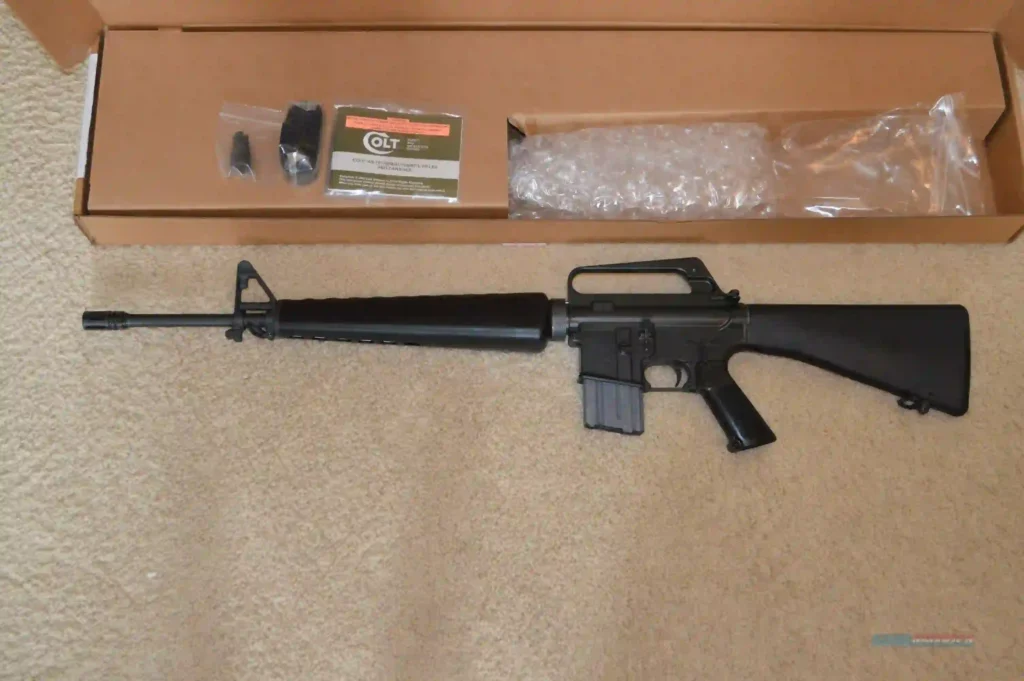Introduction
The M16 rifle, a staple in military arsenals since the Vietnam War, is renowned for its performance, reliability, and technological advancements. However, like any firearm, it comes with its own set of advantages and disadvantages. Understanding these pros and cons can help you determine whether the M16 is the right choice for your needs, whether for military, law enforcement, or civilian use. This article explores the pros and cons of using an M16 rifle.
Pros of Using an M16 Rifle
- Proven Reliability and Durability
The M16 has a long history of use in various combat scenarios, proving its reliability and durability. It has been extensively tested and used in different environments, from dense jungles to arid deserts.
- Durability: The M16 is designed to withstand harsh conditions and extensive use. Its construction materials and design contribute to its long service life.
- Field-Proven: The rifle’s performance in numerous conflicts has demonstrated its dependability, making it a trusted weapon for many armed forces.
- Accuracy and Precision
The M16 is known for its accuracy and precision, which are crucial in both combat and competitive shooting environments.
- Barrel Design: The rifle features a high-quality barrel that ensures consistent bullet trajectory and velocity, enhancing accuracy.
- Sighting Systems: The M16 is compatible with a wide range of optics and sighting systems, which can improve aiming precision.
- Low Recoil: The gas-operated system helps manage recoil, allowing for better control and follow-up shots.
- Modular and Versatile
One of the key strengths of the M16 is its modular design, which allows for extensive customization and adaptability.
- Interchangeable Parts: Many parts of the M16 for sale can be easily swapped out or upgraded, including barrels, stocks, and handguards.
- Accessory Compatibility: The rifle is equipped with Picatinny rails, enabling the attachment of various accessories such as scopes, lights, and laser sights.
- Caliber Options: The M16 platform can be adapted to fire different calibers, providing versatility for different missions and preferences.
- Ergonomic Design
The M16’s ergonomic design enhances user comfort and operational efficiency.
- Adjustable Stock: Modern versions of the M16 feature adjustable stocks, allowing users to customize the length of pull.
- Ambidextrous Controls: The rifle includes ambidextrous safety selectors and magazine releases, making it suitable for both left and right-handed shooters.
- Balanced Weight: The design distributes weight evenly, reducing fatigue during prolonged use.
- Continued Modernization
The M16 has not remained static; it has continuously evolved to incorporate modern advancements.
- Upgraded Materials: The use of advanced polymers and alloys has reduced the rifle’s weight and increased its durability.
- Enhanced Internals: Improvements in internal components have boosted reliability and ease of maintenance.
- Advanced Optics: Integration with modern optics has kept the M16 competitive with newer firearm technologies.
Cons of Using an M16 Rifle
- Maintenance Requirements
While the M16 is reliable, it requires regular maintenance to ensure optimal performance.
- Frequent Cleaning: The direct impingement gas system tends to deposit carbon and residue in the receiver, necessitating regular cleaning.
- Detailed Maintenance: Keeping the rifle in top condition requires detailed maintenance, which can be time-consuming and requires proper training.
- Initial Cost
Acquiring an M16 can be expensive, especially for civilian use.
- High Purchase Price: The cost of purchasing an M16 can be significant, particularly for newer models with advanced features.
- Additional Costs: Accessories, maintenance tools, and ammunition add to the overall cost of ownership.
- Complexity in Operation
The M16’s advanced features and modularity come with a learning curve.
- Training Required: Users need proper training to operate and maintain the M16 effectively, which can be a barrier for novices.
- Complex Mechanisms: The rifle’s internal mechanisms are more complex compared to simpler firearm designs, which can complicate field repairs and maintenance.
- Weight and Size
While the M16 is relatively lightweight for a rifle, it can still be cumbersome in certain situations.
- Longer Length: The full-length design of the M16 can be less maneuverable in tight spaces compared to more compact firearms.
- Added Weight: When fully loaded with accessories and a full magazine, the rifle’s weight can become a disadvantage, especially during long missions.
- Ammunition Limitations
The standard 5.56mm NATO round, while effective, has its limitations.
- Stopping Power: Critics argue that the 5.56mm round lacks the stopping power of larger calibers, which can be a disadvantage in certain combat scenarios.
- Range Limitations: The effective range of the 5.56mm round is adequate for most engagements but falls short compared to some larger caliber rifles.
Conclusion
The M16 rifle remains relevant today due to its proven reliability, accuracy, versatility, ergonomic design, and continued modernization. However, it also comes with some drawbacks, including maintenance requirements, high initial cost, operational complexity, and limitations in weight and ammunition. Weighing these pros and cons is essential for anyone considering the M16 for military, law enforcement, or civilian use. By understanding its strengths and limitations, users can make an informed decision and maximize the benefits of this iconic firearm.
